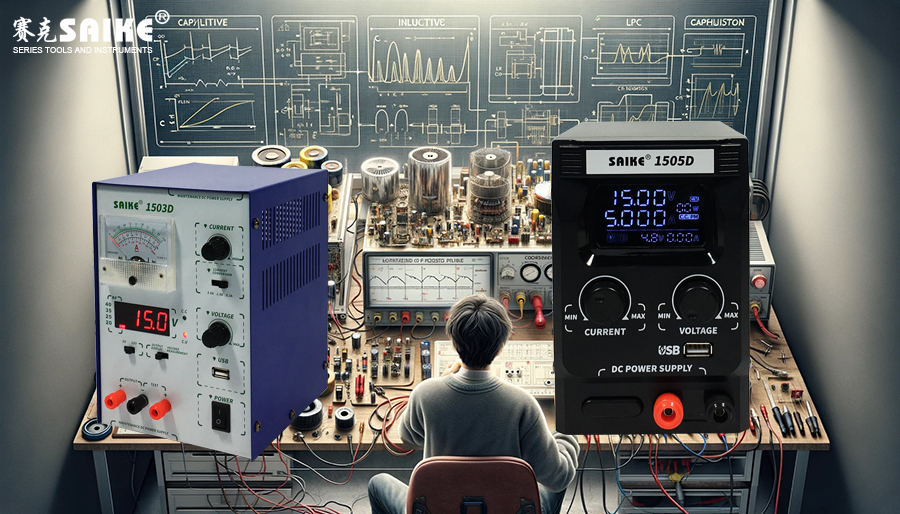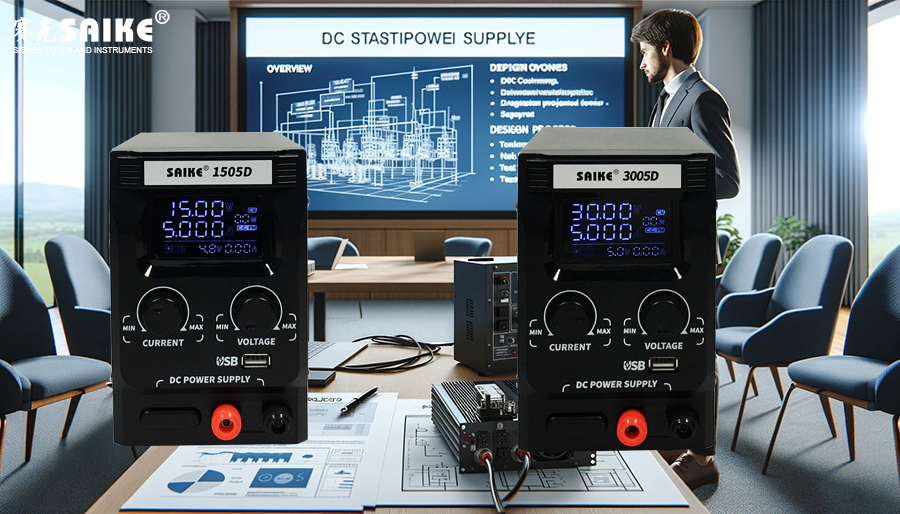
SK-YJ000ZLWYDY-KP 100007
The filtering circuit of a DC stabilized power supply is a crucial component primarily used to reduce the AC ripple component in the output of the rectifier circuit, providing a more stable DC output. In the design and operation of electronic devices, the filtering circuit plays a vital role in ensuring power quality and device stability. This article will delve into the working principle of the filtering circuit, including commonly used filter types and their functions.
I. Basic Types of Filters
1.Capacitive Filter
– The capacitive filter utilizes the energy storage characteristics of capacitors to smooth the output voltage. When the output voltage of the rectifier circuit reaches its peak, the capacitor charges and releases electrical energy when the voltage drops, thereby reducing voltage fluctuations.
2.Inductive Filter
– The inductive filter uses the characteristics of inductance to suppress high-frequency ripple. Inductance can hinder sudden changes in current, making the output current more stable.
3.LC Filter (Inductance-Capacitance Filter)
– The LC filter combines the features of inductance and capacitance, providing more effective ripple suppression. Inductance suppresses current changes, while capacitance smooths voltage fluctuations, resulting in a more stable output voltage.
4.Π-type Filter
– The Π-type filter is a filter composed of two capacitors and an inductor, shaped like the Greek letter Π. This structure helps provide good filtering effects at both low and high frequencies.
II. Detailed Analysis of the Filtering Process
1.Capacitive Filtering
– After half-wave or full-wave rectification, the capacitor is connected to the output. The capacitor charges during voltage peaks and maintains the output voltage by discharging when the input voltage is below the peak, thereby reducing output ripple.
2.Inductive Filtering
– The inductive element is placed between the power supply output and the load. Since inductance resists sudden changes in current, it can smooth rapid changes in output current and reduce resulting voltage fluctuations.
3.LC Filtering
– The LC combination provides effective ripple suppression across a wider frequency range. Typically, inductance first suppresses rapid current changes, and capacitance then smooths subsequent voltage fluctuations. Together, they significantly reduce output ripple.
III. Design Considerations for Filtering Circuits
1.Capacity Selection
– When selecting the size of capacitors and inductors, it is necessary to consider the characteristics of the load and the output ripple of the rectifier. Excessive capacity may increase the physical size and cost of the circuit, while insufficient capacity cannot effectively filter.
2.Frequency Response
– The filter design must consider the frequency range to be addressed. For example, inductive filters are more suitable for suppressing high-frequency ripple, while capacitive filters are more effective at suppressing low-frequency fluctuations.
3.Load Stability
– The design of the filtering circuit also needs to consider the stability of the load. An unstable load may cause power output fluctuations, increasing filtering difficulty.
IV. Summary
The filtering circuit of the DC stabilized power supply reduces the ripple of the output voltage by using capacitors, inductors, or their combinations, providing a more stable DC output. Understanding the working principles of different types of filters and their design considerations is key to optimizing power supply design and ensuring stable operation of electronic devices. By reasonably selecting filter components and designs, the performance and reliability of the power supply can be significantly improved.


